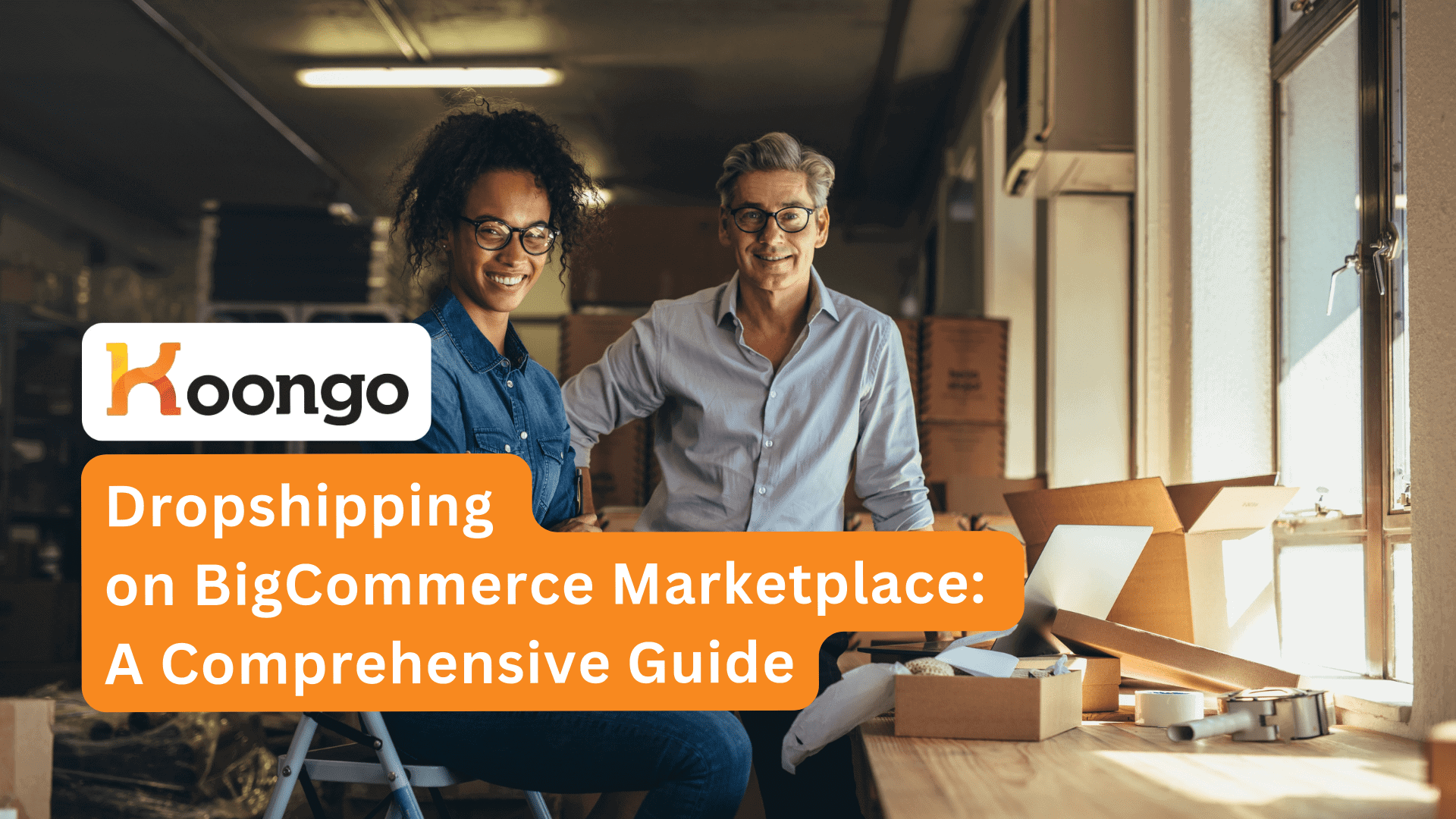The purpose of this article is to provide a comprehensive guide on dropshipping using the BigCommerce site. Whether you’re a budding entrepreneur or an established retailer looking to diversify your sales channels, this guide will offer valuable insights and practical steps to help you succeed in the world of dropshipping. We will cover the fundamentals of dropshipping, the benefits of using BigCommerce for your dropshipping business, and the key steps to setting up and optimizing your BigCommerce store for maximum efficiency and profitability.
What is Dropshipping?
Definition and Explanation of Dropshipping
Dropshipping is a retail fulfillment method where the seller does not keep the products it sells in stock. Instead, the seller purchases inventory as needed from a third party—usually a wholesaler or manufacturer—to fulfill orders. The third party then ships the product directly to the customer. As a result, the merchant never handles the product directly.
This model offers several advantages:
- Low Startup Costs: Since you don’t need to invest heavily in inventory, you can start your business with minimal capital.
- Reduced Risk: Without the need to purchase stock upfront, you avoid the risks associated with unsold inventory.
- Scalability: You can offer a wide range of products without worrying about inventory management or storage space.

Benefits of Dropshipping for E-commerce Businesses
- Low Overhead Costs: Without the need for a physical inventory, storage costs, and the risks of unsold stock, dropshipping significantly reduces overhead expenses. This allows businesses to allocate resources more efficiently, focusing on marketing, customer service, and other growth-driven activities.
- Flexibility and Scalability: Dropshipping offers unparalleled flexibility and scalability. You can quickly add or remove products based on market trends and customer demands. Additionally, scaling your business becomes easier as you are not limited by physical storage space or inventory management challenges.
- Wide Product Selection: With dropshipping, you can offer a broad range of products without the need to physically stock them. This enables you to cater to diverse customer preferences and stay competitive in the market.
- Easy to Start: The dropshipping model allows entrepreneurs to enter the e-commerce space with relatively low barriers to entry. You don’t need to worry about warehousing, packaging, or shipping logistics, making it easier to focus on building your brand and driving sales.
- Location Independence: Dropshipping businesses can be run from anywhere with an internet connection. This geographic flexibility allows business owners to operate remotely and manage their operations from any location.

Why Choose BigCommerce for Dropshipping?
BigCommerce is a powerful e-commerce platform designed to support businesses of all sizes. It offers a comprehensive set of features, seamless integrations, and an intuitive interface that makes it an ideal choice for dropshipping. Here are some key benefits of using BigCommerce for your dropshipping business:
User-Friendly Interface
BigCommerce provides a user-friendly interface that simplifies the process of setting up and managing an online store. With its intuitive dashboard, even those with limited technical skills can easily navigate and utilize the platform’s features. The platform offers a variety of customizable templates that allow you to create a professional-looking store without needing extensive design knowledge.
Key features of BigCommerce’s user-friendly interface include:
- Drag-and-Drop Builder: The drag-and-drop website builder makes it easy to create and customize your online store’s layout. You can add, remove, or rearrange elements on your website with ease.
- Comprehensive Dashboard: The dashboard provides an overview of your store’s performance, including sales, traffic, and customer insights. This helps you make informed decisions and optimize your business strategies.
- App Integrations: BigCommerce offers a wide range of integrations with popular apps and tools, allowing you to enhance your store’s functionality and streamline operations.
Scalability
One of the standout features of BigCommerce is its scalability. Whether you’re a small startup or a large enterprise, BigCommerce is designed to grow with your business. The platform can handle large volumes of traffic and transactions, ensuring that your store runs smoothly even during peak times.
Key scalability benefits include:
- Performance Optimization: BigCommerce is built on a robust infrastructure that ensures fast loading times and reliable performance. This is crucial for maintaining a positive user experience and reducing cart abandonment rates.
- Advanced Security: The platform provides advanced security features, including SSL certification, fraud protection, and PCI compliance, ensuring that your store and customer data are secure.
- Unlimited Products and Storage: With BigCommerce, you can add an unlimited number of products to your store without worrying about storage limitations. This allows you to expand your product offerings as your business grows.
Extensive Integrations
BigCommerce’s extensive integrations make it an ideal platform for dropshipping. The platform seamlessly integrates with a wide range of dropshipping apps and marketplaces, allowing you to expand your reach and streamline your operations.
Key integrations include:
- Dropshipping Apps: BigCommerce integrates with popular dropshipping apps such as AliExpress, Oberlo, and Spocket, enabling you to import products, manage orders, and automate fulfillment processes.
- Marketplaces: With BigCommerce, you can easily connect your store to major marketplaces like Amazon, eBay, and Walmart. This helps you reach a larger audience and increase your sales potential.
- Payment Gateways: The platform supports a variety of payment gateways, including PayPal, Stripe, and Square, providing your customers with multiple payment options and ensuring a seamless checkout experience.
Leveraging Koongo for Enhanced Dropshipping
Koongo is a powerful tool that enhances your dropshipping business by automating product data and order synchronization across multiple marketplaces and channels. With Koongo, you can:
- Keep Data Fresh: Ensure that your product listings are always up-to-date with the latest information, prices, and stock levels.
- Save Time: Automate tedious tasks such as product data management and order synchronization, allowing you to focus on growing your business.
- Expand Your Reach: Connect to over 500 selling channels, including Google Shopping, Facebook, Instagram, Pinterest, and more, to reach a wider audience and increase your sales.
By integrating Koongo with BigCommerce, you can streamline your dropshipping operations, reduce manual work, and scale your business more efficiently.

Setting Up Dropshipping on BigCommerce
Starting a dropshipping business on BigCommerce involves several critical steps to ensure your success. This comprehensive guide will walk you through each stage of the process, from choosing a profitable niche to managing orders and inventory. By following these steps, you can build a streamlined and effective dropshipping operation on BigCommerce.
Step-by-Step Guide to Getting Started with Dropshipping on BigCommerce
Choose Your Niche
Importance of Selecting a Profitable Niche
Selecting the right niche is crucial to the success of your dropshipping business. A profitable niche should have high demand, low competition, and good profit margins. It allows you to target a specific audience, making your marketing efforts more effective and your store more attractive to potential customers.
Tips for Niche Selection
- Research Market Trends: Use tools like Google Trends, social media insights, and industry reports to identify trending products and niches.
- Analyze Competitors: Look at what other dropshipping stores are selling and how they are marketing their products. Identify gaps in the market that you can fill.
- Consider Your Interests: Choose a niche that aligns with your interests and expertise. This will make it easier for you to create engaging content and connect with your audience.
- Evaluate Profit Margins: Ensure that the products you choose have good profit margins. This is essential for covering your costs and making a profit.
- Assess Demand and Competition: Use keyword research tools to gauge the demand for your chosen niche and analyze the competition to determine if there’s room for your business.
Find Reliable Suppliers
Criteria for Choosing Suppliers
Finding reliable suppliers is key to ensuring product quality and timely delivery. Here are some criteria to consider when selecting suppliers:
- Product Quality: Ensure that the supplier offers high-quality products that meet your standards and customer expectations.
- Shipping Times: Choose suppliers with reasonable shipping times to provide a good customer experience.
- Communication: Select suppliers who are responsive and easy to communicate with, as this is crucial for resolving any issues that may arise.
- Reputation: Check reviews and ratings from other retailers to ensure the supplier has a good reputation.
- Pricing: Compare prices among different suppliers to ensure you’re getting a competitive rate without compromising on quality.
Recommended Supplier Platforms
- AliExpress: A popular platform with a vast selection of products and reliable suppliers.
- Spocket: Focuses on suppliers from the US and Europe, offering fast shipping times and high-quality products.
- Oberlo: Integrates seamlessly with Shopify and BigCommerce, providing an easy way to import products from AliExpress.
- SaleHoo: A directory of verified suppliers offering a wide range of products at wholesale prices.
- Doba: Combines a product catalog with a dropshipping supplier directory, simplifying the sourcing process.
Integrate Dropshipping Apps
Overview of Popular Dropshipping Apps Compatible with BigCommerce
- AliExpress Dropshipping: Allows you to import products directly from AliExpress, manage orders, and track shipments.
- Spocket: Connects you with suppliers from the US and Europe, offering faster shipping times and high-quality products.
- Printful: Ideal for custom products, Printful handles printing, packing, and shipping for your store.
- Modalyst: Offers a curated list of suppliers, including independent brands and private-label products.
- Inventory Source: Automates inventory management and order fulfillment by connecting you with suppliers.
Step-by-Step Instructions for Integration
- Sign Up for a BigCommerce Account: If you haven’t already, sign up for a BigCommerce account and set up your online store.
- Choose a Dropshipping App: Select the dropshipping app that best fits your business needs from the BigCommerce App Marketplace.
- Install the App: Follow the prompts to install the app on your BigCommerce store.
- Connect Your Account: Create an account with the dropshipping app and connect it to your BigCommerce store.
- Import Products: Browse the app’s product catalog and import the products you want to sell in your store.
- Set Up Product Listings: Customize the product titles, descriptions, prices, and images to match your brand and attract customers.
- Manage Orders: Use the app to manage orders, track shipments, and handle customer service.

Optimizing Your BigCommerce Store for Dropshipping
Tips for Optimizing Product Listings
- Write Compelling Product Titles: Use clear, descriptive, and keyword-rich titles that accurately reflect the product.
- Create Detailed Descriptions: Provide thorough and engaging product descriptions that highlight the features and benefits of each item.
- Use High-Quality Images: Include multiple high-resolution images showing the product from different angles.
- Set Competitive Prices: Research competitors’ pricing and set your prices competitively while ensuring a healthy profit margin.
- Utilize Product Reviews: Encourage customers to leave reviews and display them prominently on your product pages.
Strategies for Improving Website Performance and User Experience
- Fast Loading Times: Optimize your website’s speed by compressing images, using a content delivery network (CDN), and minimizing code.
- Mobile Optimization: Ensure your store is mobile-friendly, as a significant portion of e-commerce traffic comes from mobile devices.
- Clear Navigation: Create an intuitive and easy-to-navigate website structure to help customers find products quickly.
- Secure Checkout: Offer a secure and seamless checkout process with multiple payment options.
- Customer Support: Provide excellent customer service through live chat, email, or phone support.
SEO Best Practices for Increasing Visibility
- Keyword Research: Identify relevant keywords for your niche and incorporate them naturally into your product titles, descriptions, and meta tags.
- Optimize Meta Tags: Write compelling and keyword-rich meta titles and descriptions for each product page.
- Internal Linking: Use internal links to connect related products and categories, improving navigation and SEO.
- Content Marketing: Create valuable content such as blog posts, guides, and tutorials to attract and engage your target audience.
- Backlink Building: Acquire high-quality backlinks from reputable websites to boost your store’s authority and search engine rankings.

Managing Orders and Inventory
Using BigCommerce Tools for Order Management
BigCommerce offers a range of tools to help you manage orders efficiently:
- Order Dashboard: The order dashboard provides an overview of all your orders, allowing you to track their status and manage fulfillment.
- Order Notifications: Set up email notifications to alert you when new orders are placed, shipped, or require attention.
- Automated Workflows: Use BigCommerce’s automated workflows to streamline order processing and reduce manual tasks.
Automating Inventory Updates
- Real-Time Inventory Sync: Ensure your inventory levels are always accurate by using real-time synchronization with your suppliers.
- Inventory Management Apps: Utilize inventory management apps that integrate with BigCommerce to automate stock updates and prevent overselling.
- Supplier Integration: Directly connect with suppliers who offer automated inventory updates to keep your product availability current.
Ensuring Timely and Accurate Fulfillment
- Order Tracking: Provide customers with tracking information for their orders to keep them informed about delivery status.
- Automated Fulfillment: Use dropshipping apps that automate the fulfillment process, ensuring orders are processed and shipped promptly.
- Customer Communication: Maintain clear communication with customers about order status, delays, and any issues that may arise.
- Quality Control: Regularly monitor your suppliers’ performance to ensure they meet your quality and delivery standards.
By following these steps and utilizing BigCommerce’s robust features, you can set up a successful dropshipping business that maximizes efficiency and profitability. Remember to leverage Koongo’s powerful tools to further streamline your operations and expand your reach across multiple selling channels.

Marketing Your Dropshipping Store
Marketing is crucial for the success of any dropshipping business. To effectively market your BigCommerce store, you need to employ various strategies that increase your visibility, drive traffic, and convert visitors into customers. In this section, we will explore effective marketing strategies, how to utilize BigCommerce’s built-in tools, and the importance of leveraging social media and other channels.
Effective Marketing Strategies for Dropshipping Businesses
- Search Engine Optimization (SEO): Optimize your store and product pages for search engines to improve your organic search rankings. This involves keyword research, optimizing meta tags, using high-quality images, and creating valuable content.
- Content Marketing: Create blog posts, videos, and infographics that provide value to your target audience. Content marketing helps establish your brand as an authority in your niche and drives organic traffic to your store.
- Email Marketing: Build an email list and send regular newsletters to keep your audience engaged. Offer promotions, share updates, and provide valuable content to nurture leads and encourage repeat purchases.
- Pay-Per-Click Advertising: Use platforms like Google Ads and Facebook Ads to run targeted advertising campaigns. PPC allows you to reach a larger audience quickly and drive immediate traffic to your store.
- Influencer Marketing: Partner with influencers in your niche to promote your products. Influencer marketing can help you reach a highly engaged audience and build credibility for your brand.
- Affiliate Marketing: Set up an affiliate program to incentivize others to promote your products. Affiliates earn a commission for each sale they generate, which can significantly expand your reach.
- Social Media Marketing: Leverage social media platforms to connect with your audience, share content, and promote your products. Engage with followers, run contests, and use social media ads to boost your visibility.
Utilizing BigCommerce’s Built-In Marketing Tools
BigCommerce offers a suite of built-in marketing tools that can help you implement these strategies effectively. Here are some key features:
- SEO Tools: BigCommerce provides built-in SEO tools to optimize your store. You can edit meta titles and descriptions, create SEO-friendly URLs, and use the platform’s blogging feature to publish content.
- Email Marketing Integration: BigCommerce integrates with popular email marketing platforms like Mailchimp, Klaviyo, and Constant Contact. This allows you to create automated email campaigns, segment your audience, and track performance.
- Social Media Integration: Connect your store with social media platforms like Facebook, Instagram, and Pinterest. This enables you to sync your product catalog, run ads, and sell directly through social media channels.
- PPC Advertising: BigCommerce integrates with Google Shopping and Facebook Ads, making it easy to set up and manage PPC campaigns. You can promote your products across multiple channels and track your ad performance.
- Customer Reviews: Use BigCommerce’s built-in review system to collect and display customer reviews. Positive reviews build trust and influence purchasing decisions.
Leveraging Social Media and Other Channels
Social media is a powerful tool for promoting your dropshipping business. Here are some strategies for leveraging social media and other channels:
- Content Sharing: Regularly share valuable content on your social media profiles. This includes blog posts, product updates, customer testimonials, and behind-the-scenes content.
- Engagement: Engage with your audience by responding to comments, messages, and mentions. Building a community around your brand fosters loyalty and encourages word-of-mouth marketing.
- Social Media Ads: Run targeted ad campaigns on platforms like Facebook, Instagram, and Pinterest. Use custom audiences to reach people who have interacted with your store or are interested in your niche.
- Influencer Partnerships: Collaborate with influencers to reach a larger audience. Influencers can create authentic content that showcases your products and drives traffic to your store.
- Video Marketing: Use platforms like YouTube and TikTok to create video content. Product demonstrations, unboxing videos, and tutorials can engage your audience and showcase your products effectively.
- Cross-Promotions: Partner with other businesses to run cross-promotions. This can include joint giveaways, blog collaborations, and social media shoutouts.

Leveraging Koongo for Enhanced Dropshipping
Koongo is a powerful tool that can significantly enhance your dropshipping operations on BigCommerce. It offers advanced features for product feed management and order synchronization, making multi-channel selling more efficient and effective.
Introduction to Koongo and Its Features
Koongo is designed to streamline your e-commerce operations by automating product data and order synchronization across multiple marketplaces and channels. Some of its key features include:
- Product Data Management: Easily manage and update product information, prices, and stock levels across all your sales channels from a single platform.
- Order Synchronization: Automate the synchronization of orders from various marketplaces to your BigCommerce store, ensuring timely and accurate fulfillment.
- Multi-Channel Integration: Connect to over 500+ selling channels, including major marketplaces like Amazon, eBay, and Walmart, as well as social media platforms like Facebook and Instagram.
- Automated Feeds: Set up automated product feeds to keep your listings up-to-date with the latest information. This reduces manual work and ensures consistency across all channels.
- Comprehensive Reporting: Access detailed reports and analytics to track your sales performance, identify trends, and make informed business decisions.
Benefits of Using Koongo for Product Feed Management and Order Synchronization
- Increased Efficiency: Automate time-consuming tasks such as product data updates and order synchronization, allowing you to focus on growing your business.
- Consistency Across Channels: Ensure that your product information is consistent across all sales channels, reducing errors and improving the customer experience.
- Expanded Reach: Connect to a wide range of marketplaces and channels, increasing your visibility and sales potential.
- Improved Accuracy: Automate order synchronization to ensure that orders are processed accurately and promptly, reducing the risk of errors and delays.
- Enhanced Reporting: Gain valuable insights into your sales performance and channel effectiveness, enabling you to optimize your strategies and increase profitability.
How Koongo Simplifies Multi-Channel Selling
Koongo simplifies multi-channel selling by providing a centralized platform to manage all your e-commerce operations. Here’s how it works:
- Integration: Connect your BigCommerce store to Koongo and set up integrations with your preferred sales channels.
- Product Feeds: Create and configure product feeds for each channel. Koongo automatically updates these feeds with the latest product information.
- Order Management: Synchronize orders from all channels to your BigCommerce store. Koongo ensures that orders are processed correctly and shipped on time.
- Monitoring and Reporting: Use Koongo’s reporting tools to monitor your sales performance and identify areas for improvement. Access real-time data to make informed decisions and optimize your strategies.

Case Studies and Success Stories
Examples of Successful Dropshipping Businesses on BigCommerce
- Fashion Boutique: A fashion boutique used BigCommerce and Koongo to expand their product range and reach a global audience. By leveraging Koongo’s multi-channel integration, they increased their sales by 50% within six months.
- Tech Gadgets Store: A tech gadgets store integrated BigCommerce with multiple marketplaces using Koongo. The automation of product feeds and order synchronization saved them hours of manual work each week, allowing them to focus on marketing and customer service.
- Home Decor Shop: A home decor shop utilized BigCommerce’s SEO tools and Koongo’s reporting features to optimize their product listings and improve their search engine rankings. As a result, their organic traffic grew by 40%, leading to a significant increase in sales.
Key Takeaways and Lessons Learned
- Leverage Automation: Automating tasks like product data updates and order synchronization can save time and reduce errors, allowing you to focus on strategic growth.
- Optimize Product Listings: Ensure that your product listings are optimized for search engines and provide detailed, accurate information to attract and convert customers.
- Expand Your Reach: Use multi-channel selling to reach a larger audience and diversify your revenue streams. Koongo makes it easy to connect to various marketplaces and social media platforms.
- Monitor Performance: Regularly review your sales performance and channel effectiveness using analytics and reporting tools. This helps you identify trends, optimize strategies, and make informed decisions.
Starting and growing a successful dropshipping business on BigCommerce involves selecting a profitable niche, finding reliable suppliers, integrating dropshipping apps, and optimizing your store for maximum efficiency and profitability. Leveraging BigCommerce’s built-in marketing tools and employing effective marketing strategies can drive traffic and increase sales. Additionally, using Koongo for product feed management and order synchronization simplifies multi-channel selling and enhances your overall e-commerce operations.
Dropshipping on BigCommerce offers a powerful combination of flexibility, scalability, and ease of use. By following the steps outlined in this guide and leveraging the robust features of BigCommerce and Koongo, you can build a thriving dropshipping business that meets the demands of today’s e-commerce landscape.
Ready to take your dropshipping business to the next level? Start your 30 days free trial with Koongo today and experience the benefits of automated product feed management and order synchronization. Visit Koongo’s BigCommerce page to learn more and get started!
Continue reading →
 EN
EN 
